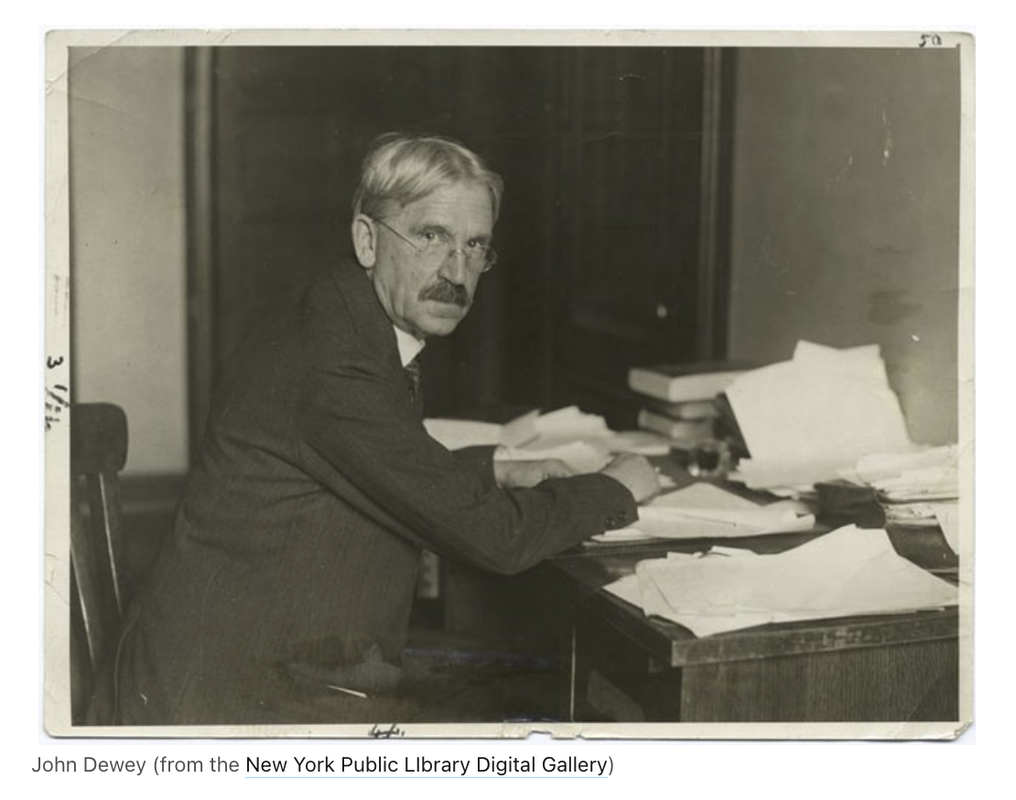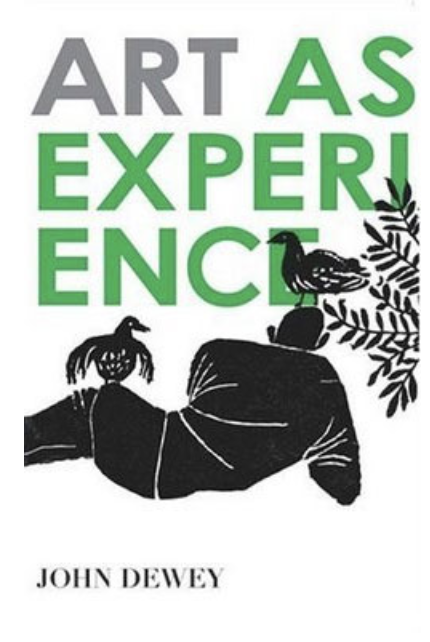Reconsidering John Dewey’s Art as Experience This post is the summary of important text after reading the article, "Reconsidering John Dewey's Art as Experience' by Alexis Clements with my point of view. For those to whom his name is very familiar, he is said to be one of the most, if not the most, influential American philosophers. But here I want to talk about one of his lesser-known works, Art as Experience, which brings together some of his larger political and philosophic ideas in a discussion of aesthetics and culture, and their role in a robust society. A teacher from early in his career, and a political philosopher throughout his life, Dewey was an incredibly prolific writer — the full collection of his writing takes up 37 volumes. Prove that you have been exposed. Dewey said that the events that occurred during his life were marked by massive upheavals surrounding racial, gender, and economic oppression. extension of laissez-faire economics; an overly prescriptive or nonexistent education that is failing a large portion of the population; Political turmoil and continuing war. He seemed to be responding to strengthening his belief in the ideal of democracy. According to the Stanford Encyclopedia of Philosophy, Dewey states, “Only when the individual participates in democratic practice can the individual be properly expressed. That said, part of how we succeed as individuals comes from interacting, working, and even disagreeing with others. He also saw things like education, journalism and the arts as essential to a strong population and democracy. From Thomas Alexander's 1987 book Theory of Art, Experience, and Nature by John Dewey: The book Art as Experience is not the first time he focused on “experience” as something core in his thinking. He developed his ideas of experience most explicitly in his educational writing. Dewey is concerned with helping every student to have the “full and ready use of all his capacities.” To his mind, in order to accomplish that, you first have to understand how that child was shaped by experience up to that point (what conditions the child grew up under, what events were taking place around them, etc), and then you have to allow the student to interact with the subjects they are learning — to create new experiences and reflect on their past experiences as a way of gaining new and greater understandings. At base, what he’s after is experiential learning rather than learning through memorization or lecturing. This all may seem obvious in the 21st century, but it was a big deal in Dewey’s era to stop teachers from dismissing poor children, who had very different experiences from more affluent students, as stupid and instead acknowledge that they have a different view of the world and a different set of skills when they enter the classroom for the first time. Education issues aside, what Dewey is getting at is simple enough — we are shaped by experience and so experience is also then the best tool for helping people gain new understanding. What Art as Experience brings forward is that art is actually a unique form of experience that carries significant potential to be a part of shaping individuals and societies: “Whatever path the work of art pursues, it, just because it is a full and intense experience, keeps alive the power to experience the common world in its fullness.” dea 1 – The Arts Are Not (and Should Not Be) Removed From the Stuff of Everyday Life When an art product once attains classic status, it somehow becomes isolated from the human condition under which it was brought into being and from the human consequences it engenders in actual life-experience.” The growth of capitalism has been a powerful influence in the development of the museum as the proper home for works of art, and in the promotion of the idea that they are apart from common life.” Idea 2 – Art Is a Powerful, Imperfect Form and the Experience of it Has the Potential to Be Transformative “A lifetime would be too short to reproduce in words a single emotion. In reality, however, poet and novelist have an immense advantage over even an expert psychologist in dealing with emotion. For the former build up a concrete situation and permit it to evoke emotional response. Instead of a description of an emotion in intellectual and symbolic terms, the artist ‘does the deed that breeds’ the emotion.” And because Dewey’s concept of experience is rooted in ideas around education and democracy and change, for him art carries an enormous potential for changing both artists and audiences. I particularly like that he’s clear that these transformation isn’t always rose-tinted or soft and fuzzy: “Moreover, resistance and conflict have always been factors in generating art; and they are, as we have seen, a necessary part of artistic form (353).” Idea 3 — Art Comes from Culture and Vice Versa, and it Helps Wake Us Up to What We’ve Been Glossing Over “In the end, works of art are the only media of complete and unhindered communication between man and man that can occur in a world full of gulfs and walls that limit community of experience.” (109) “The Louvre is a book where we learn to read. But we should not be content to keep the formulae of our illustrious predecessors. Let us leave them so as to study beautiful nature and search to express it according to our personal temperament.” (325) Idea 4 – Finally, and Perhaps Most Importantly for Dewey, Art is Political " But one of the functions of art is precisely to sap the moralistic timidity that causes the mind to shy away from some materials and refuses to admit them into clear and purifying light of perceptive consciousness.” “The moral function of art itself is to remove prejudice, do away with the scales that keep the eye from seeing, tear away the veils due to wont and custom, perfect the power to perceive.”
0 Comments
Leave a Reply. |
Myungja Anna KohArtist Categories
All
Archives
July 2024
|
Proudly powered by Weebly



 RSS Feed
RSS Feed